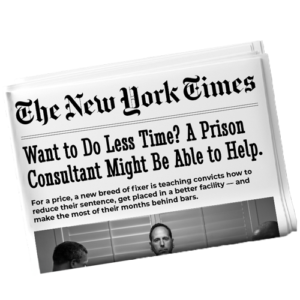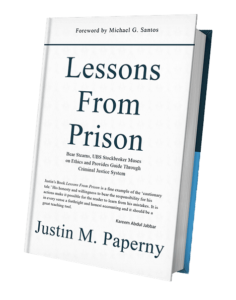When violent crimes occur—especially those involving the death of children—our first reaction is often one of outrage, believing the person responsible should stay behind bars for life. Cases like the mother who drowned her young sons nearly 30 years ago provoke strong emotions, as they should. While the crime is horrific and impossible to forget, there are still lessons to be learned about what it takes to get out of prison earlier and earn more time in a halfway house. Understanding these lessons can provide clarity for those who want to make a case for more liberty.
Getting out of prison earlier isn’t about luck or simply serving time; it’s about actively proving why you deserve more freedom. This is especially true for people who want to show they are ready for the next step, like transitioning to a halfway house. So, what record are you building to prove you are worthy of more liberty?
What Does It Really Take to Get an Early Release from Prison?
Getting an early release requires more than just saying the right things to a case manager or submitting a request. It’s about what you’ve done every day of your sentence to show that you are ready to return to society. For many, the mistake is thinking that time served or avoiding trouble is enough. But that’s rarely the case. You need to show real, visible work that demonstrates a shift in thinking and behavior.
For example, some people in prison might focus on staying out of trouble and saying the right things, thinking it’s enough to prove they’ve changed. But words without proof hold little value. Stakeholders, like case managers and prison staff who make recommendations for early release, need to see concrete actions. Have you taken steps to educate yourself, learn new skills, or mentor others? What evidence do you have to show that you understand the harm caused by your actions and are actively working to change?
Building a Record That Proves Change
What does a strong record look like? It involves actions that go beyond what’s required. Did you choose to participate in programs that help you think differently about your choices and behavior? Are you creating a documented history of your efforts, whether through volunteering, writing, or other meaningful activities that show your commitment to living a law-abiding life?
Think about it this way: If someone in charge of your release was looking at your record, what would they see? Would they see someone who’s done the bare minimum, or someone who’s gone above and beyond to show they’re serious about making a different life outside prison? The record you build should answer the question of why you’re no longer a risk to society and why you’re prepared to handle more freedom responsibly.
The Impact of Past Behavior and Actions Inside Prison
It’s important to understand that not only your crime but your behavior in prison will affect decisions about early release and halfway house placement. Negative actions—like drug use, getting into fights, or inappropriate relationships with staff—don’t just show a lack of judgment; they send a message that you’re not ready for more freedom. On the other hand, consistently making better choices, avoiding trouble, and demonstrating maturity can help build a case for more liberty.
Consider this: if you’ve spent 1,3,5,10, 15, or 20 years in prison without significant efforts to build a positive record, what would make anyone believe that things will be different once you’re out? If you haven’t committed to change in a controlled environment, why would they expect different behavior when you have more freedom?
Avoiding the Trap of Doing Nothing
One major pitfall is the belief that time alone is enough to prove readiness for release. Many people in prison think that as long as they serve their sentence without major infractions, they’ve done enough. This mindset misses the point. What have you done with your time? Have you documented your growth, your efforts, and your plans after prison? If you haven’t been proactive in creating a new narrative for yourself, then you’re not building a case for release—you’re just waiting.
Every day in prison is an opportunity to build or destroy your chances for an early release. If you’ve spent that time productively, it will show. But if it’s filled with infractions, complaints, or idleness, don’t be surprised when requests for early release are denied.
The Reality of Earning More Halfway House Time
Securing an early release or earning more time in a halfway house isn’t guaranteed, but it is possible. It starts with taking a hard look at what you’ve done with your time and asking yourself tough questions: What have I documented to show I am ready for more freedom? What steps have I taken that go beyond the bare minimum? How have I shown that I’m committed to making different choices moving forward?
If you want to be out earlier, start preparing now. Understand that every day is a chance to build your case. A halfway house, early release, or other forms of increased liberty are not about finding a shortcut or saying the right things; they are about demonstrating that you have earned the right to live differently.
What Record Are You Building?
When discussing what it takes to get out of prison earlier, it’s not about minimizing the severity of a crime; it’s about what steps someone has taken since then. For those looking to transition to a halfway house or seek earlier release, the lesson is clear: It’s not just about time served, but about what you’ve done with that time. Start now. Build a record that shows who you’ve become and why you have earned more leniency.
Best,
Justin Paperny




